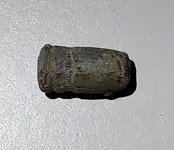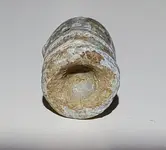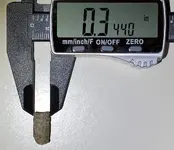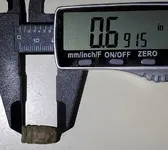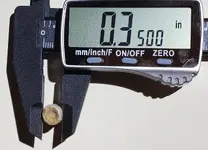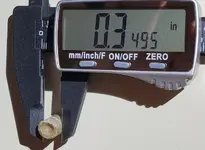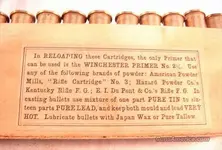Mrmastodon wrote:
> Let me preface this by saying I know *nothing* about ammunition, but [...]
Okay, here's some "basics." The term caliber refers to the diameter of the tunnel (the "bore") inside the gunbarrel. Caliber is NEVER the same as the projectile's diameter. Firing the bullet through a bore which has rifling grooves tends to squeeze the bullet's body into the grooves. So, measuring the diameter of a fired bullet WITHOUT INCLUDING the raised rifling ridges on the bullet tells you the gun's caliber. Rifling grooves in the gun's bore usually are only about .01 or .015-inch deep, so when you measure a fired bullet's diameter, if rifling-marks (ridges) are showing, you must subtract about .01 to .015-inch to calculate the gun's caliber.
Your photos show the base of your fired bullet did indeed get somewhat deformed by impact. I suggest you put the calipers around its body on the section in between the two body-grooves (correctly called cannelures -- which most people incorrectly call "rings"). Then, measure it again, putting the calipers just slightly above the bullet's upper groove. Then come back and tell us those measurements.
Sidenote:
The earliest historical record I can find for a US-made bullet which had the "reeding" (multiple tiny parallel ridges) inside the groove/cannelure is 1877. I do not know who gets credit for inventing reeded-groove bullets, and I do not know whether European manufacturers produced them earlier or later than US bullet-manufacturers.
> seeing as I live in what was once the murder capital of the south [...]
Would that be downtown Atlanta, or Miami, Memphis, Birmingham, or New Orleans?



